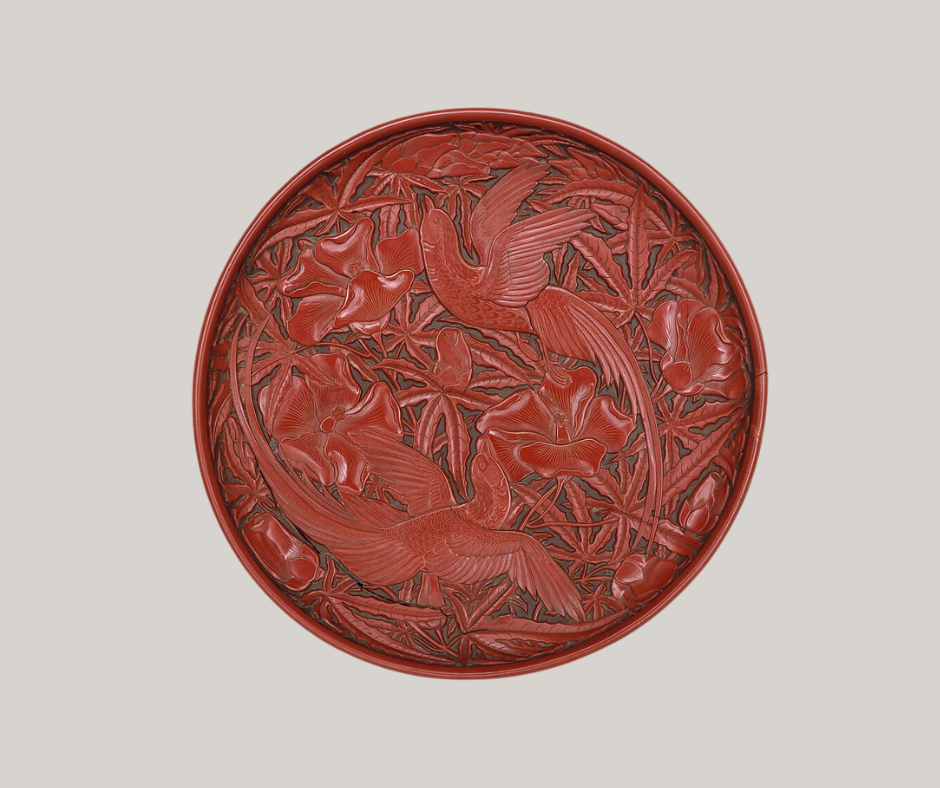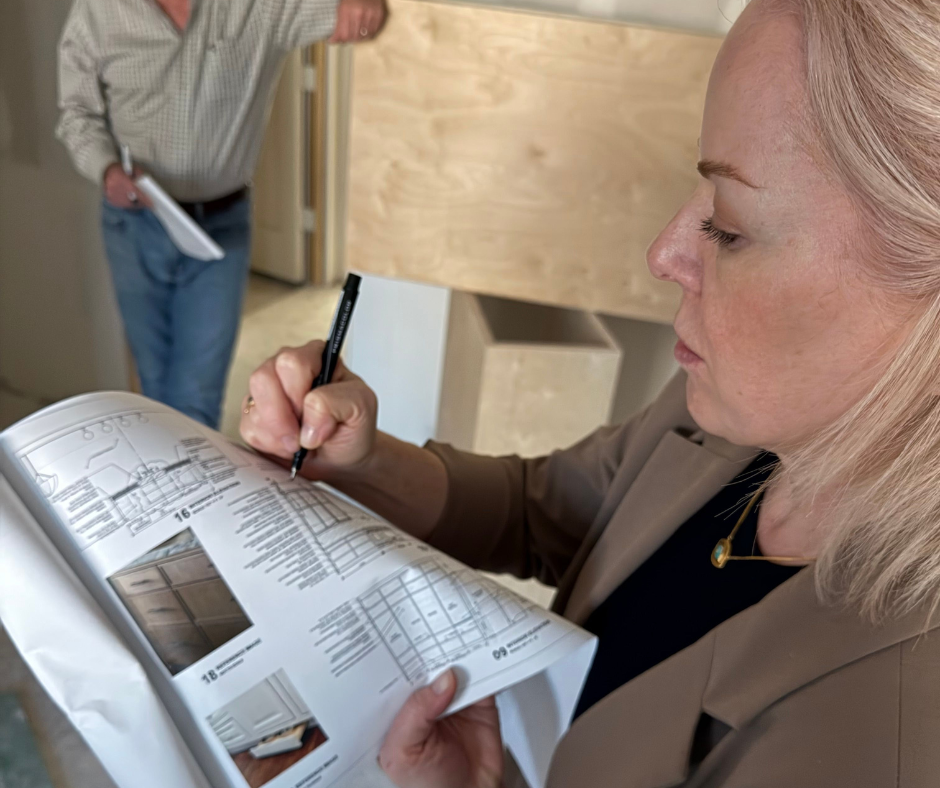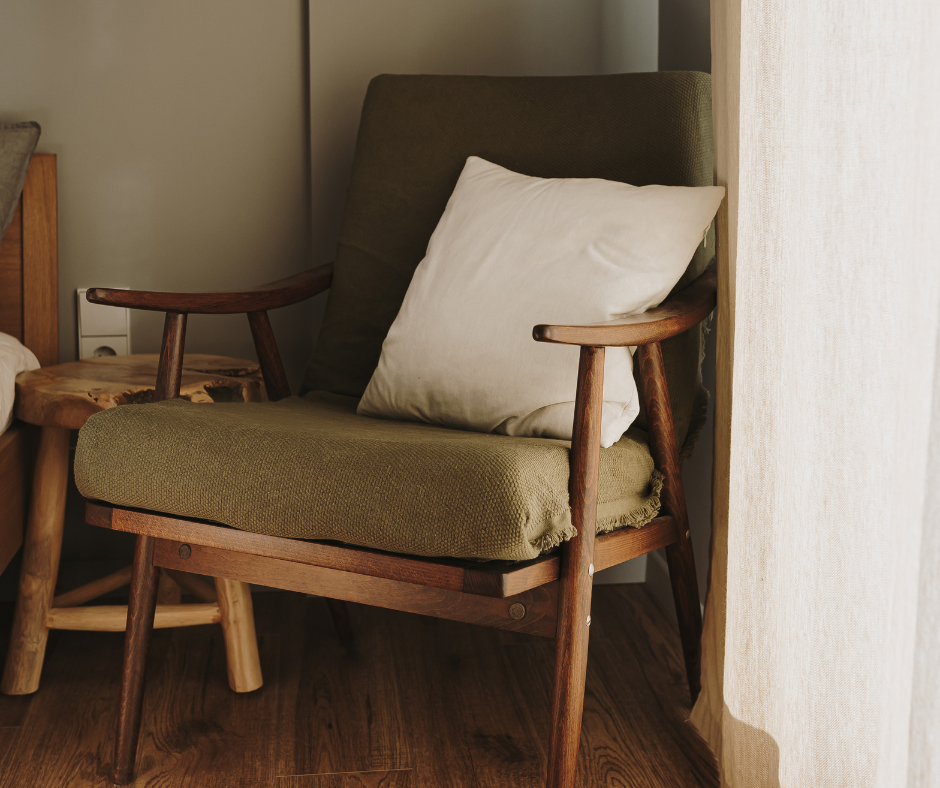
7 Alvar Aalto Furniture Pieces That Exemplify Scandinavian Design
Summary
Alvar Aalto’s furniture shows how Scandinavian design can feel warm, human, and quietly radical. His architectural background shaped the proportions, materials, and restraint found in each of his pieces. From the modest Stool 60 to the sculptural Paimio Chair and Tank Chair, Aalto’s work blends functionalism with natural materials in a way that still guides Nordic design today.
Reflection Questions
How does Aalto’s use of natural materials—especially birch—shift your understanding of what “modernism” can look and feel like?
Which of Aalto’s ideas about human-centered design parallel the challenges you face in your own design work today?
If you remove ornament and trend from your process, what are the essential forms or gestures that remain?
Journal Prompt
Choose one Aalto piece from the list and write about it through the lens of your own practice. What problems was Aalto solving, and how do those same concerns surface in your work? Describe how the object balances clarity, material honesty, and emotion — and then consider how you might carry one of those qualities forward in something you create next.
Scandinavian design always circles back to a few core ideas: honest materials, clear silhouettes, and practical yet beautiful forms. Alvar Aalto’s work sits at the center of that design history. His pieces feel familiar to anyone who has spent time studying Nordic design, yet they still manage to hold a sort of freshness. Maybe it’s the way he handled birch or the gentle curves that seem to loosen the rigidity of modernism. You could argue it’s both.
Aalto approached furniture with an architect’s eye, which explains the sense of proportion running through his pieces. They’re functional and a bit poetic without drifting into ornament. When people talk about Scandinavian design being “human centered,” this is the kind of work they’re referring to.
A Brief Dive into Alvar Aalto’s Architecture Career and Background
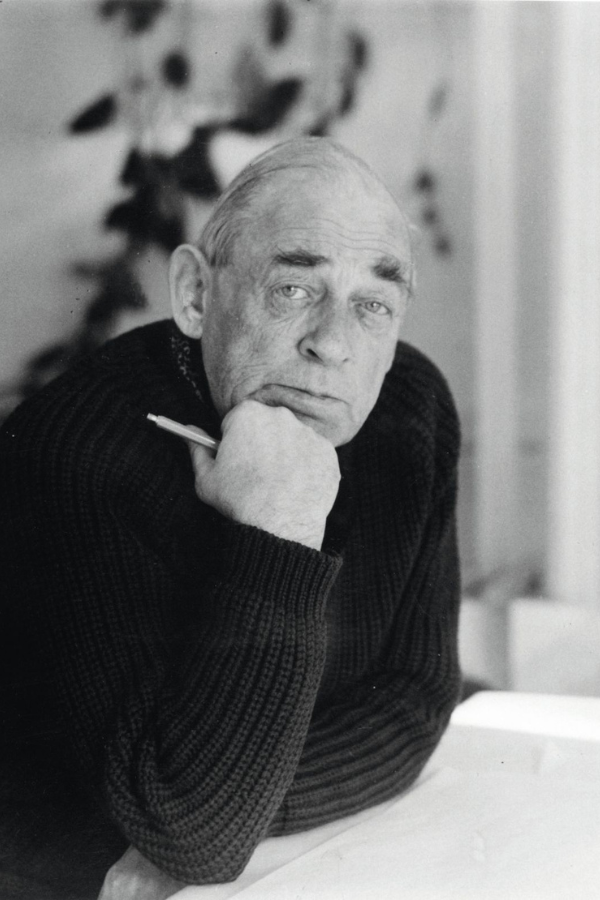
Alvar Aalto was born in 1898 in Kuortane, Finland, and his career would span more than five decades, from the 1920s into the 1970s. According to Encyclopaedia Britannica, his international reputation rests on “a distinctive blend of modernist refinement, indigenous materials, and personal expression in form and detail”.
He studied architecture at the Helsinki University of Technology and graduated in 1921. In his earliest years, he set up an office in Jyväskylä and designed small houses and residential buildings, working at first in the style known as Nordic Classicism.
By the late 1920s and into the 1930s, Aalto’s style shifted, but that change certainly wasn’t abrupt. Over time, he adopted aspects of modernism but avoided the cold industrial look often associated with it. Instead, he used warm materials like wood, and prioritized how people would feel in his buildings rather than simply how they would look. His approach has been described as focusing on human values while integrating natural materials, shapes, and structures to his work.
Iconic Architectural Designs by Aalto

By the early 1930s, Aalto was designing in a way that felt functional but still grounded in the textures and light of Finland. The Paimio Sanatorium, a tuberculosis facility completed in 1933, shows how deliberate that approach was. Aalto designed the building, its interiors, and many of its furnishings, and the choices all work together. The emphasis on well-being, air, and comfort runs through the entire project.
Aalto’s mature body of work includes major civic and cultural projects. One example sis the Säynätsalo Town Hall (1950-52) in Central Finland, which is often cited as emblematic of his architecture. Of course, his designs aren’t just buildings as the architecture and furniture were often conceived together, creating unified environments where the building, its fixtures and its furniture feel part of a whole.
Fuel your creative fire & be a part of a supportive community that values how you love to live.
subscribe to our newsletter
*please check your Spam folder for the latest DesignDash Magazine issue immediately after subscription

That same mindset led to the founding of Artek with Maire Gullichsen. The company helped bring Aalto’s furniture into public buildings, ordinary homes, and cultural institutions around the world. The appeal wasn’t about novelty. It came from practical shapes, long-lasting materials, and a design attitude that didn’t shift much with trends.
Moreover, Aalto worked internationally, taught abroad, and engaged with large-scale planning efforts. According to his foundation’s website, he “enjoyed an exceptionally rich and varied career as an architect and designer, both at home in Finland and abroad”. In short, Alvar Aalto wasn’t just designing buildings. He was defining how modern architecture could be warmer, more humane, grounded in place, and still formally rigorous.
7 Alvar Aalto Furniture Pieces That Exemplify Scandinavian Design
Stool 60
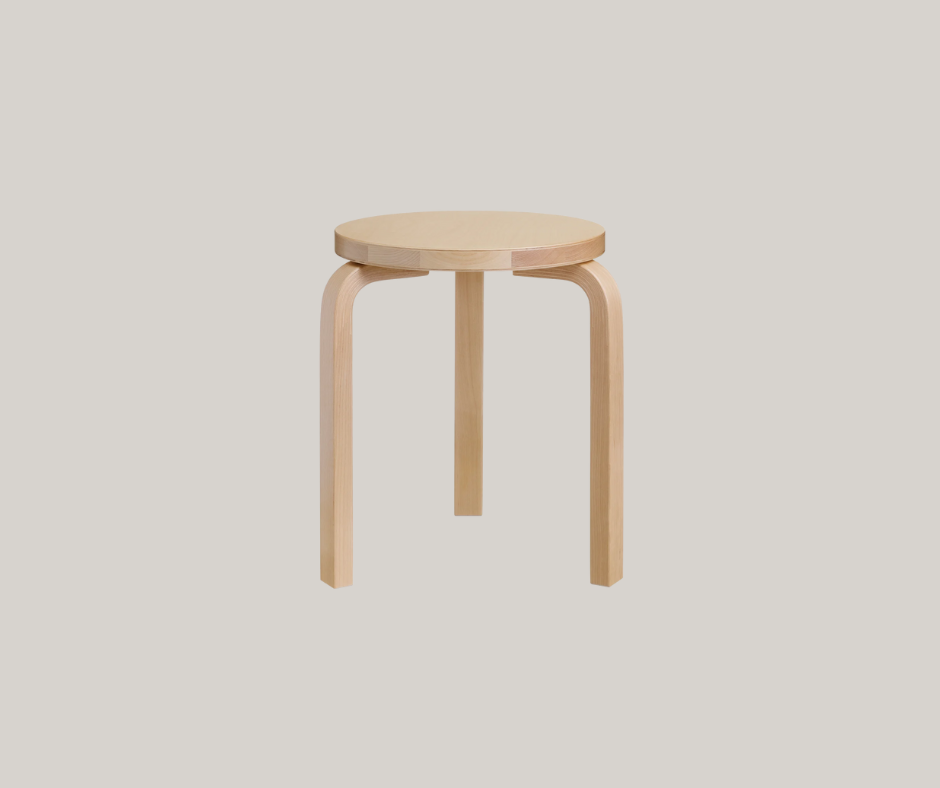
The three-legged birch stool may be the object most closely tied to Aalto’s legacy as both a Finnish architect and a furniture designer. Still sold by Artek, Stool 60 shows how naturally Aalto moved between architecture and furnishings; the same pragmatic ideas guiding his public buildings in Finland also shaped this small piece. The bent L-legs became a signature of Aalto’s furniture, an example of his unorthodox handling of wood and his interest in organic forms that could be repeated without losing their character.
People still visit the Alvar Aalto Museum to see his original drawings for the stool because it represents the beginning of a more organic modernist style that set him apart from leading modernists working in the stricter International Style. The form looks modest, but the construction reflects a remarkable synthesis of craftsmanship and functionalism. Artek describes the design as “the most elemental of [his] furniture pieces,” about which we must agree!
Paimio Chair
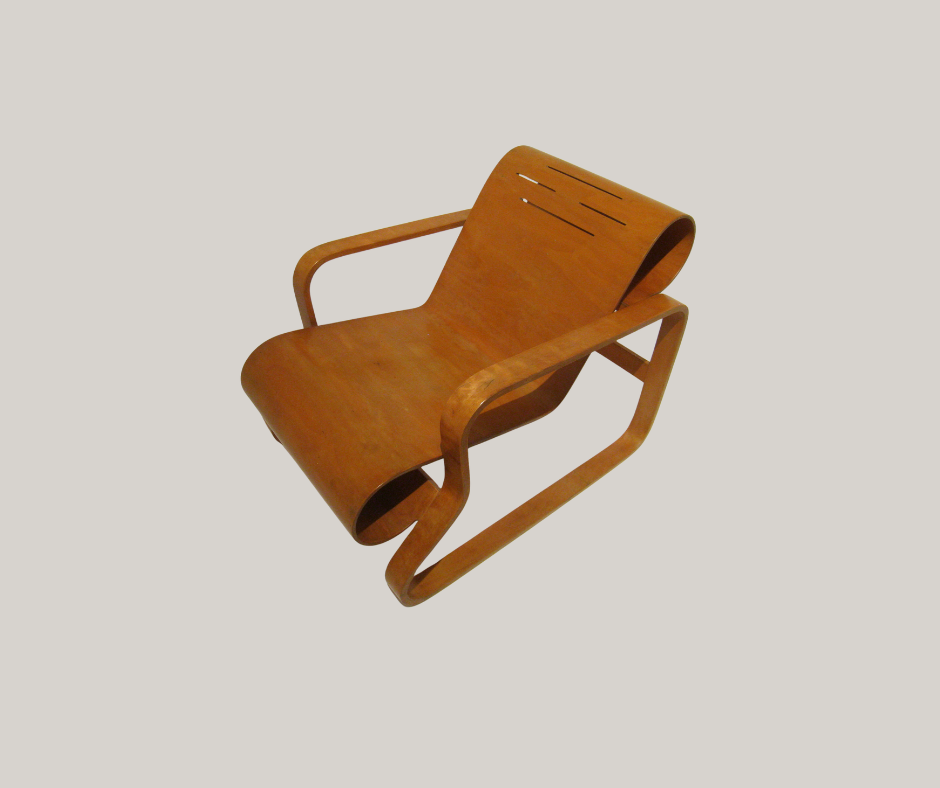
Designed for the Paimio Sanatorium, this chair is squarely at the intersection of modern architecture and design. The tuberculosis sanatorium itself was one of Aalto’s notable works, and the chair shows how far he pushed natural materials, especially wood, to humanize architecture and interior surfaces. According to the museum in Jyväskylä, the angle of the plywood seat was carefully tuned to help patients breathe more easily, something that says a lot about his larger architectural practice.
When you see the chair at MoMA or in exhibitions devoted to Scandinavian modern art and design, it’s clear how its soft curves differ from the sharper lines favored by many architects of the period. The work reflects Aalto’s belief that interiors should support the body gently, not impose on it.
Armchair 41 and 42
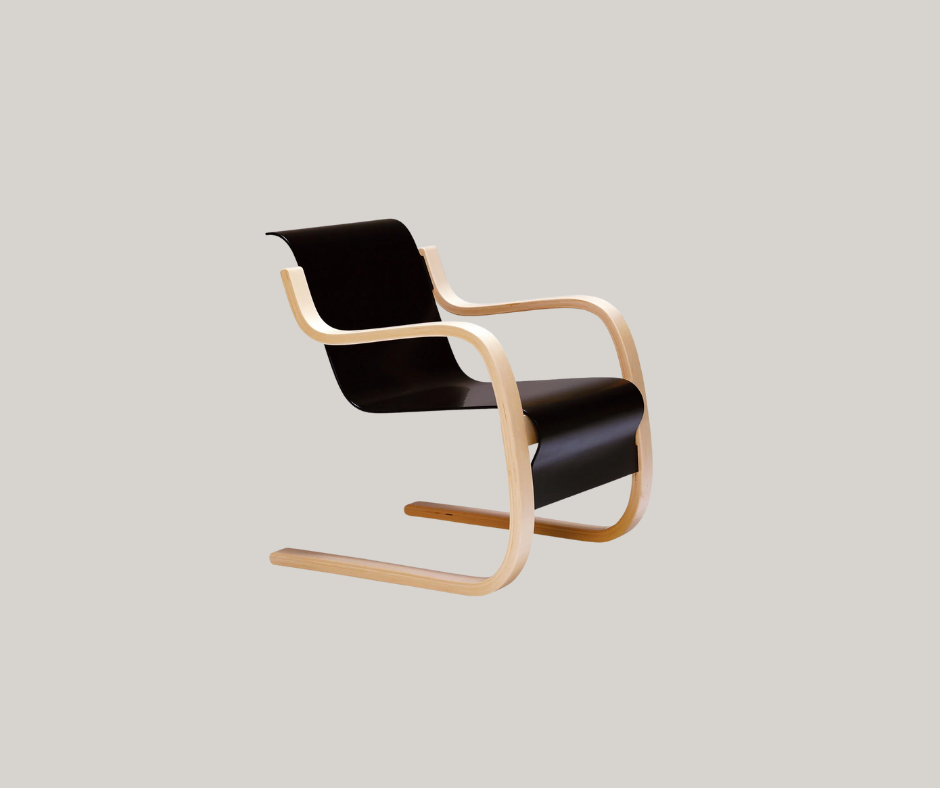
Both the 41 and the 42 armchairs expand on the plywood innovations developed for the sanatorium. Aalto designed the bent birch supports with a kind of quiet confidence, and the result feels lighter than many chairs produced by architects working in Cambridge, Stockholm, or New York at the same time. The piece also hints at Aalto’s broader architectural work, where he softened the edges of functionalism with natural materials and a more relaxed sense of proportion.
Aino Aalto, his wife and longtime collaborator, helped refine the aesthetics of many furnishings during this period. Their shared interest in glass, textiles, and wood created a studio language that tied architecture and furniture together in a seamless way.
How Armchair 42 Differs From the Paimio Chair

The Paimio Chair (Model 42 but usually referred to simply as the Paimio Chair) was designed specifically for the Paimio Sanatorium in 1931–32. Its purpose shaped its form: the broad, continuous plywood “seat” curves into a single sweeping plane. According to the Alvar Aalto Museum, Aalto calibrated that angle to ease the breathing of tuberculosis patients. The silhouette is open and airy, and the frame feels almost architectural because the bent birch arms act like two clean structural arcs.
Armchair 42, often called the Paimio Armchair, is a related but separate design. It uses the same idea of a bent laminated birch frame, yet the structure is more compact and noticeably lighter in presence. Where the original Paimio Chair’s seat stretches into one long curve, Armchair 42 breaks the surfaces apart: the back and seat feel like distinct planes rather than a single sculptural sweep. The proportions are a bit more relaxed. It wasn’t tied to medical needs, so Aalto allowed himself more freedom in how the chair supports the body.
If the Paimio Chair shows Aalto’s functional thinking as an architect, Armchair 41 and 42 show how he adapted those innovations for everyday interiors. One was engineered for a specific building; the other was refined for broader use. That difference sits at the heart of Aalto’s approach to modern architecture and design, ideas tested in a public building becoming furnishings that could live almost anywhere.
Tea Trolley 900
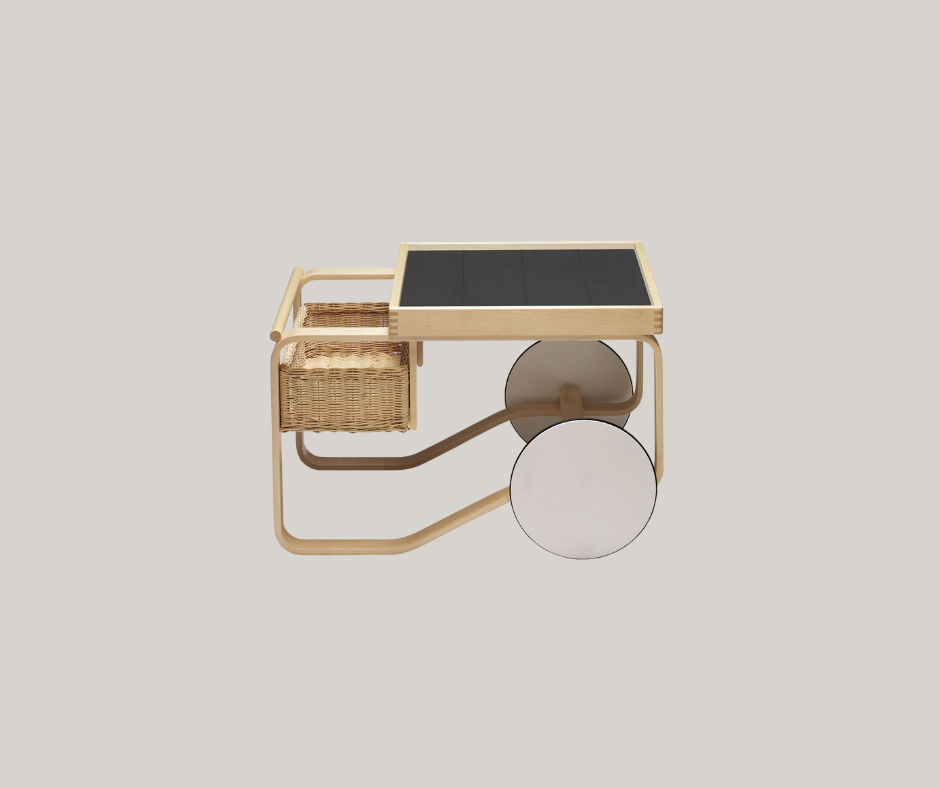
The Tea Trolley 900 appeared as Aalto and Aino were exploring ideas that blended Nordic Classicism with influences from abroad, which is a mix you can also see referenced in exhibitions at the Alvar Aalto Museum and in essays on modernism. The tiled top, large birch wheels, and woven basket give the trolley a presence that feels both practical and playful. Aalto created designs like this during a time of rapid economic growth in Finland, when there was a real appetite for furnishings that supported everyday life without feeling heavy.
Early versions appeared in contexts tied to international exhibitions, including moments surrounding the New York World’s Fair, where Scandinavian design gained attention beyond Europe. The trolley still feels rooted in Finland, though, especially in its use of wood and its relaxed scale.
Tea Trolley 901

The 901 takes the ideas of the 900 and strips them back to a cleaner, more streamlined frame. Aalto’s work often evolved this way, with one version exploring more decorative surfaces and another leaning into simpler materials. The birch veneer shelves sit lightly within the frame, showing the same interest in organic forms that shaped his architectural work in places like Turku and Helsinki.
Design historians sometimes point to the trolley as an example of how Aalto balanced modernism with a softer attitude toward domestic life. It’s functional without feeling severe.
Armchair 406
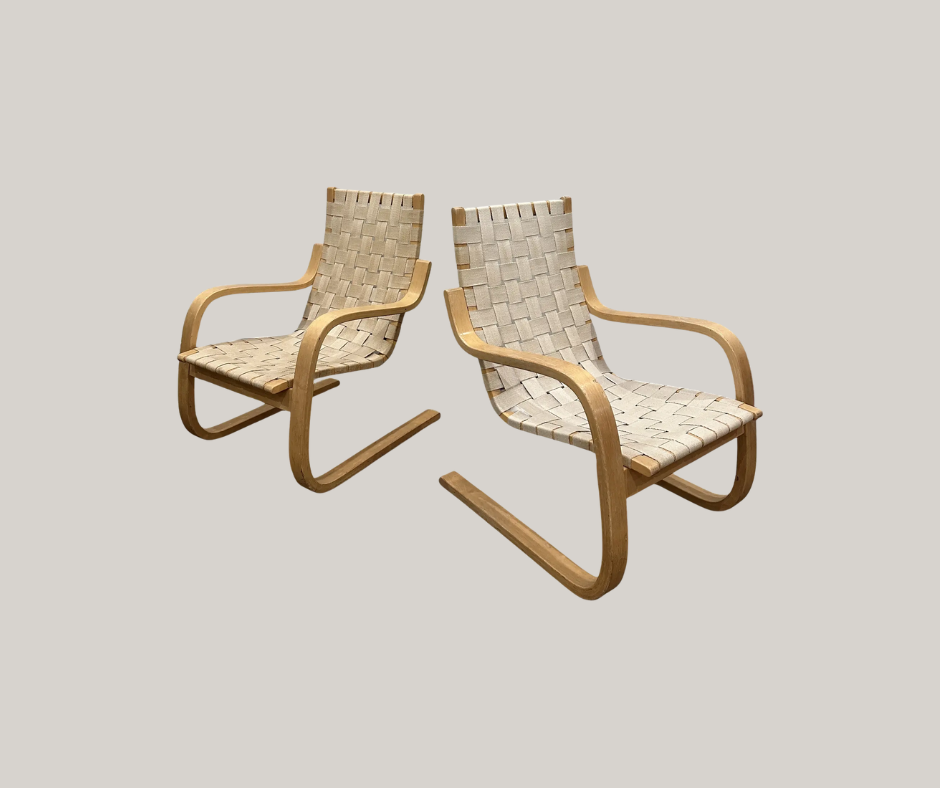
Strongly resembling Armchair 42, Armchair 406 uses webbing stretched over a birch frame, and the effect is both structural and relaxed. Aalto designed the frame with a gentle curve that echoes the line of many of his buildings, including the Baker House dormitory at MIT. The materials bring out the qualities he valued most: warmth, clarity, and an understated relationship between architecture and furniture.

The chair also reflects Aalto’s interest in making furnishings that would age well, something that often comes up in conversations at the museum in Espoo or in exhibitions on his work across the world. The design doesn’t chase novelty; it simply supports the body with quiet confidence.
Tank Chair (Armchair 400)
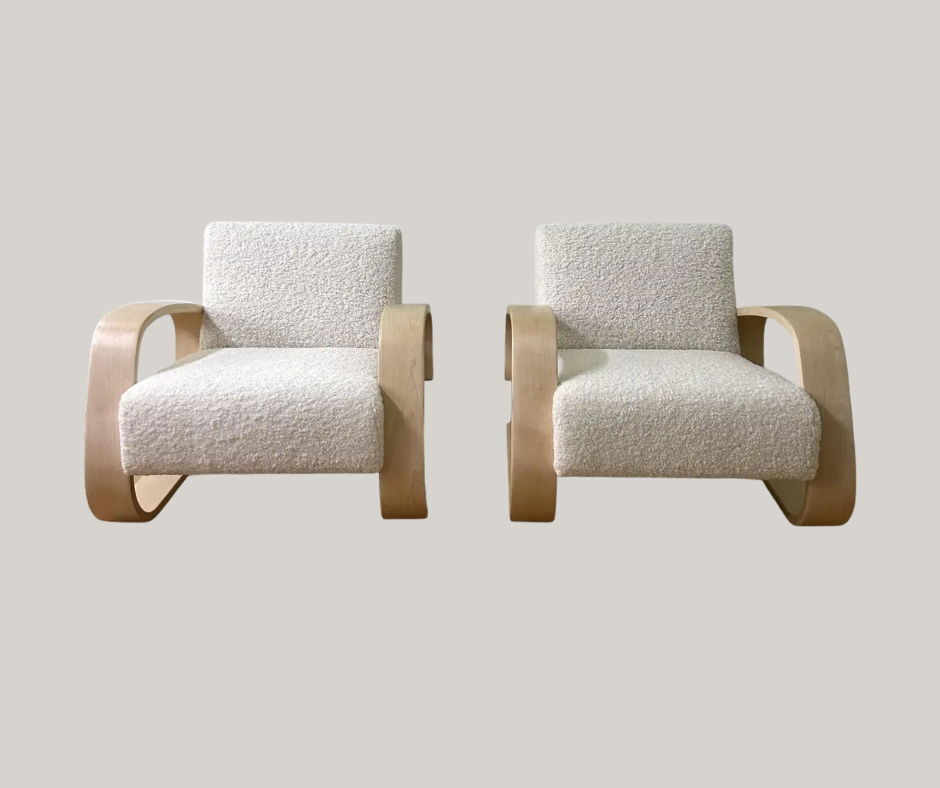
Created in 1936, this armchair is one of the most recognizable examples of Aalto’s furniture designs and it is so apropos for today, when boucle and chunky furniture is back in fashion. Its bold, laminated birch supports show just how far he was willing to push materials. Many writers link the chair’s character to the same curiosity that shaped his public buildings and interiors. It’s generous, almost sculptural, and it sits comfortably in conversations about organic modernist style.
This is also one of the pieces that demonstrates how Aalto, often mistakenly labeled a Swedish architect due to the broader Scandinavian association, differed sharply from the harder-edged modernism found elsewhere in Europe. The chair feels grounded in Finland, in the way the birch bends, and in how the form balances structure with softness.
Why These Pieces Matter
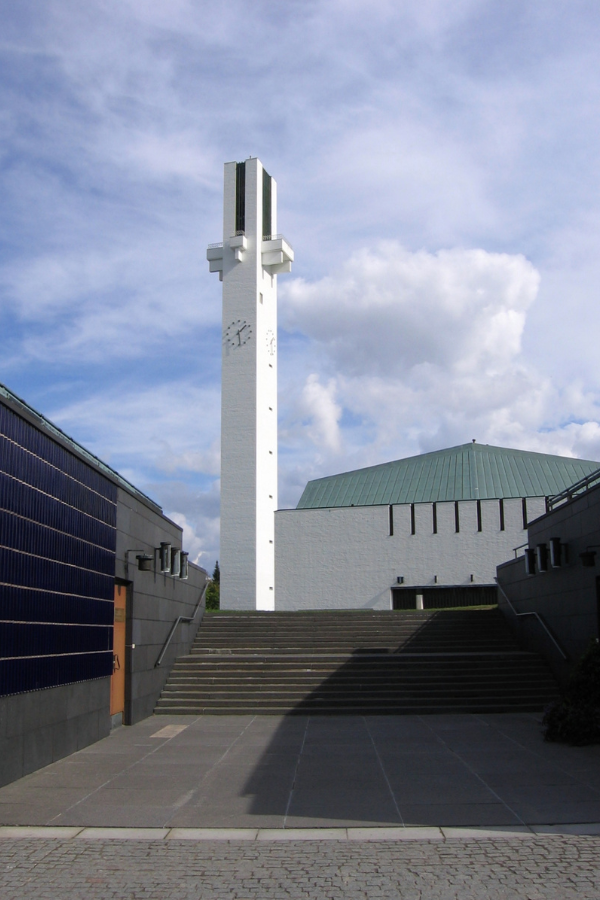
Aalto’s furniture doesn’t rely on spectacle or overt showmanship. The durability of his work comes from small innovations that accumulate over time. Bent birch changed how Scandinavian designers approached construction. Curved planes introduced a softer relationship between the body and the object. Even his tables and stools, which appear almost modest, set a foundation that many later designers built upon.
Maybe that’s why his work continues to circulate through museums, auctions, and contemporary homes. It seems likely it will stay that way for a long time.
Written by the DesignDash Editorial Team
Our contributors include experienced designers, firm owners, design writers, and other industry professionals. If you’re interested in submitting your work or collaborating, please reach out to our Editor-in-Chief at editor@designdash.com.




